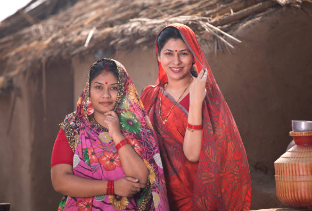Introduction
Roma Community Often called “Gypsies,” the Roma population is one of the most missed and maligned ethnic groups worldwide. With a rich cultural heritage that spans centuries, the Roma people have a vibrant history that reflects resilience and adaptability. Despite facing widespread discrimination and marginalization the Roma community continues to thrive and preserve its traditions. In this article, we will delve into the history culture and present-day challenges of the Roma community shedding light on the realities behind the term “Gypsies.”
Who are the Roma?

Originally from the Indian subcontinent over a thousand years ago the Roma often called Romani are an ethnic minority that has historically lived on the move. They moved to Europe dispersed around different areas and are currently found all over the world. Although the name “Gypsies” is frequently used to refer to the Roma many people see it negatively due to its historical connotations of bigotry and stereotypes. The Roma people would rather be called “Roma” or “Romani.”
A Brief History of the Roma Community
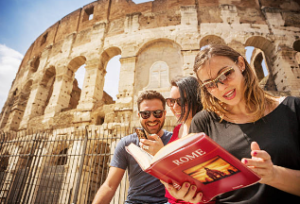
The migration of the Roma began around the 10th century travelling from northern India to Persia and eventually Europe. They arrived in Europe in the 14th century and were initially welcomed for their skills as artisans musicians, and traders. However, as the Roma community grew they faced increasing discrimination forced assimilation and even enslavement in some parts of Eastern Europe.
Throughout history, the Roma have been victims of prejudice and racism with the most tragic period being during World War II. The Roma along with Jews and other minorities were targeted by the Nazis and were subjected to mass killings forced labour and concentration camps. The Roma community was able to maintain their unique culture, language, and customs in spite of these challenges.
Cultural Aspects of the Roma Community
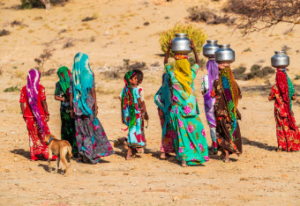
The Roma community is known for its rich cultural heritage which includes music dance crafts and a deep sense of family and community. Roma culture is diverse and customs can vary significantly depending on the region where they live. However, some common elements bind the Roma people together.
such as:
- Music and Dance: The music of the Roma is an integral part of their culture. With influences from various countries they have travelled through Roma music is characterized by vibrant rhythms and improvisational styles. Flamenco for example has roots in Roma culture. Music and dance are often performed at festivals weddings and other gatherings highlighting the Roma’s passion for expression.
- Language: The Romani language which has several dialects is a crucial aspect of Roma identity. Roma are fluent in the languages of the nations in which they reside even though many of them speak the language. The preservation of the Romani language is seen as a way to keep their cultural heritage alive.
- Traditional Crafts: The Roma are known for their craftsmanship, especially in metalworking woodworking and weaving. These skills have been passed down through generations and many Roma artisans still create beautiful jewellery, pottery and textiles.
- Family Values: Roma culture is centred on the family. The community places a strong emphasis on family loyalty respect for elders and the care of children. Extended families often live together and the Roma take pride in their close-knit communities.
The Modern-Day Challenges Faced by the Roma Community
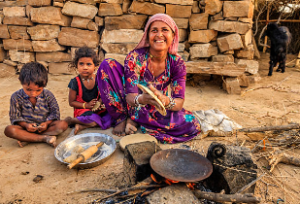
Despite their rich cultural heritage, the Roma community faces numerous challenges in the modern world. Many Roma live in poverty often in segregated settlements with limited access to education healthcare and employment opportunities.
Among the primary problems they encounter are:
- Discrimination and Prejudice: The Roma community continues to face widespread discrimination and social exclusion. Negative stereotypes portray the Roma as nomadic lawless and untrustworthy leading to prejudice and marginalization in various parts of the world. This discrimination affects their access to housing education and employment.
- Lack of Access to Education: Education is a significant challenge for many Roma children. Due to economic difficulties discrimination and other barriers many Roma children do not attend school regularly, leading to low literacy rates within the community. Efforts are being made to improve educational opportunities, but progress is slow.
- Healthcare Inequality: Access to healthcare is another major issue for the Roma. Many live in areas with inadequate healthcare facilities and there are instances where Roma people face discrimination from healthcare providers. This leads to poorer health outcomes for the community.
- Unemployment and Economic Instability: Due to systemic discrimination and limited opportunities unemployment rates are high within the Roma community. Many rely on informal work such as street vending or seasonal labour to make ends meet. This economic instability makes it difficult for Roma families to escape the cycle of poverty.
Attempts to Enhance the Roma Community’s Situation
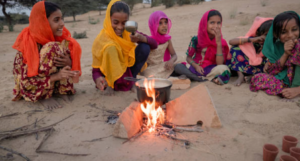
There have been numerous initiatives and campaigns to improve the situation of the Roma community. Governments NGOs and international organizations like the European Union have recognized the need to address the inequalities faced by the Roma.
Some of the steps taken include:
- Educational Programs: Various programs have been implemented to encourage Roma children to attend school. These include scholarship opportunities mentorship programs and initiatives aimed at combating discrimination in educational settings.
- Housing Projects: Efforts are being made to provide better housing solutions for Roma families. Governments and organizations are working together to ensure that Roma settlements have access to basic amenities such as clean water electricity and sanitation.
- Promoting Cultural Understanding: Raising awareness about Roma culture and history is crucial in breaking down stereotypes and promoting inclusivity. Cultural festivals workshops and media campaigns are some of the ways organizations are trying to bridge the gap between the Roma community and the broader society.
- Employment Initiatives: Programs aimed at providing vocational training and job opportunities for the Roma are helping to improve their economic situation. Supporting community-based businesses is also thought to be a means of promoting Roma people and lowering the rate of joblessness.
The Importance of Preserving Roma Culture

As well as the preservation of Roma culture is vital not just for the Roma community but for society as a whole. By understanding and appreciating the rich traditions music, art and values of the Roma we can promote diversity and inclusivity. Efforts to protect the Romani language support traditional crafts and celebrate their unique music and dance can help ensure that Roma culture continues to thrive.
Conclusion
As well as the Roma community with its centuries-old traditions and resilient spirit is an integral part of the world’s cultural mosaic. However, the struggles they face cannot be ignored. Addressing the issues of discrimination poverty and social exclusion is essential in creating a more equitable world for the Roma. As we learn more about the history culture and challenges of the Roma community. We can work together to foster understanding respect and inclusivity.
As well as understanding the Roma is not just about recognizing their struggles but also celebrating their contributions to society. By shedding the misconceptions associated with the term “Gypsies” and learning about the true essence of the Roma community. We can move toward a world where diversity is not just accepted but celebrated.
